31 Surprising Food Facts You’ll Want to Know
Updated: Jan. 17, 2024
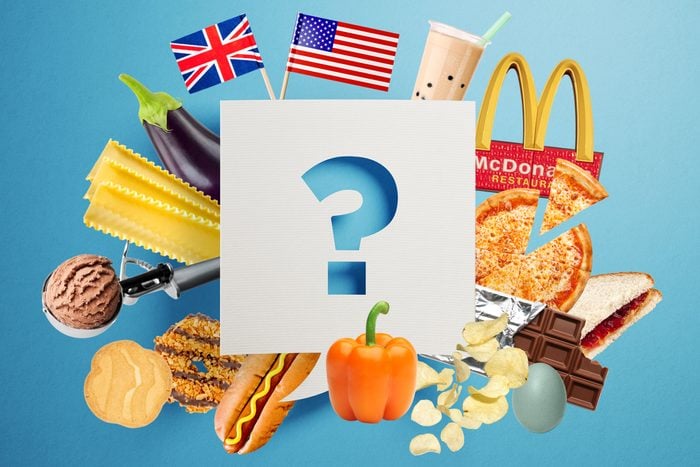
Prepare to feast on an irresistible array of food-related facts and scrumptious statistics.
Food, glorious food! We think about it, talk about it, shop for it, cook it, order it, and (hopefully) enjoy it. Between all of that, we wouldn’t blame you if you never stopped to consider various food facts. But you should. Not only are they fun, but they also help you understand exactly what lands on your plate, its origin, and how your tastes compare to everyone else’s.
For instance, did you know that only a small fraction of Americans take their coffee black? Or that the age-old Italian crowd-pleaser (no, not pizza)—lasagna—actually originated in Greece? Or that McDonald’s isn’t the oldest fast-food restaurant? Also, what is the difference between club soda and seltzer? This smorgasbord of food facts trivia is certain to beef up your knowledge about a vast topic so many of us are passionate about. Read on for more surprising food facts—and a few weird ones—that will up your trivia game.
1. Bananas are technically berries
It’s hard to miss the huge yellow heap of bananas in the produce section at a typical grocery store. Grocers are definitely giving the people what they want because, according to the USDA, bananas top the list of the most popular fresh fruit in America. While that may not be a surprising food fact, what may be is that bananas are classified as berries because they come from a single seed. With consumption at 13.4 pounds per person in America, bananas clearly have plenty of a-peel. Be sure to read about these weird food stories.

2. Watermelons are popular hostess gifts in China
A slice of cold, sweet watermelon is one of summer’s greatest pleasures—all the water in the melon’s pretty pink flesh is a sweet and juicy way to stay hydrated. Turns out, Americans aren’t the only ones who appreciate a watermelon. More than 1,200 varieties are grown in 96 countries around the world (ever heard of a yellow watermelon?), and, in terms of production, the United States currently ranks seventh, while China is in first place. Maybe that has something to do with why watermelons are popular hostess gifts in China. Learn how to make edible decorations for your table with these watermelon carving ideas.
3. McDonald’s isn’t the oldest fast-food chain
For decades, Americans have turned to fast food when they’re hungry and on the go. While some people think McDonald’s ignited the category in the 1950s, the first fast-food burger chain was actually White Castle, which was founded in Kansas in 1921.
Psst! Check out these cleansing foods that will help you detox your body naturally.
4. Around 66 percent of Americans like their toast lightly toasted
There’s a strong preference for lightly toasted toast on breakfast plates. According to a 2019 survey from YouGov, 58 percent of respondents are in the “somewhat lightly toasted” camp, with another 8 percent preferring their bread very lightly toasted. On the other hand, 32 percent prefer somewhat to very darkly toasted toast, and 1 percent like their toast burnt. No judgments here.
5. Only a fifth of Americans take their morning coffee black
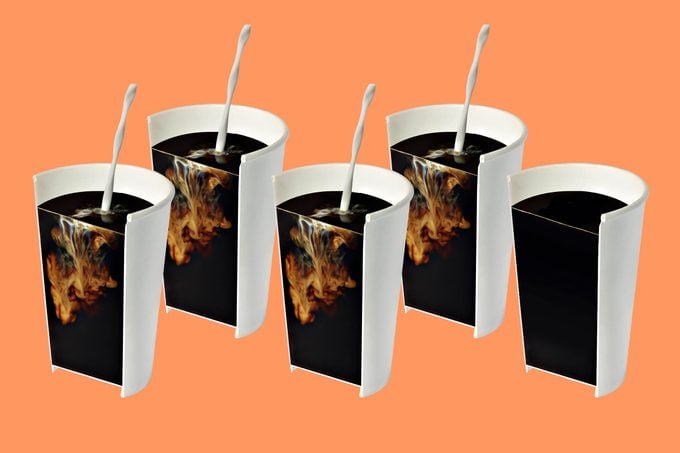
Just 20 percent of Americans like their coffee black, and another fifth (19 percent) don’t drink coffee at all. The remaining 60 percent of coffee drinkers like their cuppa somewhere along the tan spectrum. “With milk, very light tan” covers 39 percent of respondents, “with light milk, brown” is the preference for another 10 percent, and “with a lot of milk, almost white” rounds things out with 11 percent. This particular survey only asked about milk—sugar is another matter, and iced coffee was not a choice. If you want to switch to nondairy milk, find out by diving into this oat milk vs. almond milk debate.
6. One of the sweetest American traditions started with copious quantities of homemade sugar cookies
The selling of Girl Scout cookies began as early as 1917, around five years after Juliette Gordon Low founded the Girl Scouts of America in the United States. Through the 1920s, Girl Scouts baked sugar cookies, packed them in waxed paper bags, then sold them door to door for 25 cents to 35 cents per dozen to raise cash for troop activities. The tradition continues to this day—only now there are nine cookie varieties and a box costs $5 to $6.
7. Florida isn’t the biggest seller of ice cream in the United States
It’s logical to assume that the most successful ice cream market in the country is where it’s hot all the time, but according to ice cream makers and retailers, that distinction goes to the Great Lakes region (Illinois, Indiana, Michigan, Ohio, and Wisconsin). In 2020, U.S. ice cream makers churned out just over 1 billion gallons of ice cream—the majority of which was made from March through July.
8. Oranges get all the glory for packing a vitamin C punch, but this green veggie has even more
A cup-size serving of broccoli delivers 81 milligrams of vitamin C, 18 grams more than you’d get from a whole orange. The same amount of broccoli provides 3 grams of protein, 2.5 grams of fiber, and 31 calories. The green veggie is native to Asia and the Mediterranean, and it was introduced to the United States centuries ago—most likely during the colonial era.

9. Boston may—or may not—be the birthplace of this famous pie
Was Boston cream pie really invented in Beantown? Folks fascinated with food facts have debated the answer to this question for decades, and the answer is a resounding…maybe? Boston’s Parker House Hotel often gets anecdotal credit, but there doesn’t seem to be solid proof anywhere. There is also no explanation for why it was called a pie when it has no crust and is clearly a cake. Regardless, it’s delicious.
10. Pilgrims are responsible for apples in America
Several hundred years back, pilgrims planted the first U.S. apple trees in the Massachusetts Bay Colony. Now, there are apple orchards in every state. The old adage about an apple a day keeping the doctor away aside, annual per capita consumption of apples in the United States has fluctuated between about 15 and 19 pounds in the years spanning 2000 to 2021. Apples contain about 5 grams of fiber, and they don’t contain any fat, sodium, or cholesterol. You can’t go wrong munching an apple!
11. Though Italy often gets all the credit, lasagna actually originated in Greece
Layers upon layers of noodles and cheese are the stuff of dreams, as well as a Sunday staple in many Italian homes. Centuries ago, lasagna was named for the fermented noodle laganon, which was popular in ancient Greece, where lasagna originated. Yes, Greece, not Italy. Lasagna made its way to Italy by way of Roman conquerors. Italians then brought the recipe to North America in the 1800s when they immigrated. Speaking of cheese, find out what is burrata.
12. When runners want a performance enhancer, they should grab a handful of raisins
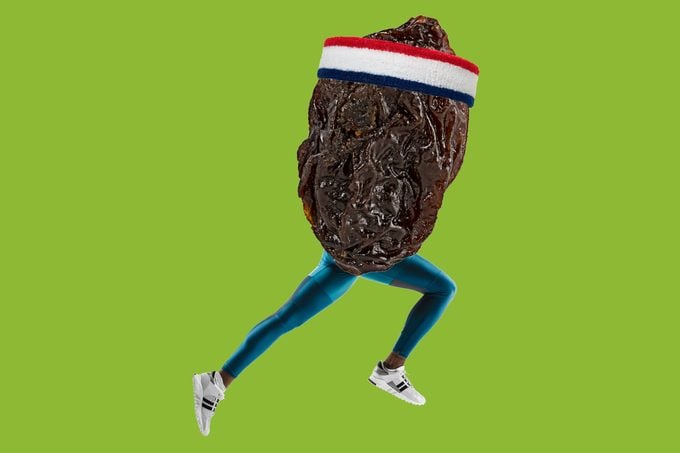
Store aisles are packed with sports chews that promise to enhance athletic performance, but there’s a simple, cost-effective, whole-food alternative. Raisins are a gift from Mother Nature to runners, thanks to their carbohydrate and glucose content, which are both sources of quick energy. According to a study in the Journal of the International Society of Sports Nutrition, noshing on raisins and drinking water improved running performance as effectively as downing commercial chews.
13. Blue-green eggshells draw tons of ooohs and aaahs, but what’s inside is no different
Though rumors fly around that eggshell color indicates nutritional variances, that’s not true at all. Shell color is simply indicative of the breed of hen that laid the egg. Assorted white and brown shells are laid by dozens of different breeds of hens: Brown speckled shells are laid by Maran, Speckledy, and Wellsummer hens, while gorgeous blue-green eggs are laid by Araucana, Rumpless Araucana, and Cream Legbar hens.
14. Only about one in 1,000 eggs will have a “bonus” yolk inside
No matter what any given egg’s fate will be—fried, scrambled, hard-cooked, mixed into batter—it starts in the hen’s ovary with the formation of an ovum. Once the ovum reaches full size, it breaks free and moves down the oviduct, where the white and shell form around it. This start-to-finish process usually takes 24 to 26 hours. But if something goes amiss, occasionally two yolks move down the oviduct together and are both enclosed in a single shell. This doesn’t mean the egg is expired—it’s perfectly safe to eat.
15. Ice cream is one of the oldest desserts in the world
The origin of this most delightful dessert goes back to the 2nd century B.C., according to the pros at the International Dairy Foods Association. However, specific details are hazy. Numerous early rulers, including Alexander the Great and Nero Claudius Caesar, supposedly enjoyed snow flavored with honey or fruit juices. For the sweet treat we eat today, fast-forward 1,000 years, when the intrepid Marco Polo returned from the Middle East with a sherbet-type recipe that historians say morphed into ice cream sometime in the 16th century. Today, purveyors of Ben & Jerry’s ice cream say vanilla is the favorite flavor in the United States, as well as in Germany, Italy, and Brazil.

16. New York officially classifies hot dogs as sandwiches
The USDA agrees with New York state (specifically the department of taxation and finance) in its sandwich determination. But the president of the National Hot Dog and Sausage Council—a trade group that refers to itself as “the official voice of hot dogs and sausages”—likens calling a hot dog a sandwich to calling the Dalai Lama “just a guy.” The confusion around this food fact stems from a philosophical divide about the precise definition of the word sandwich.
17. Bubble tea is around 40 years old
Cheerful-sounding bubble tea—also called pearl milk tea, boba milk tea, or just boba—is tea mixed with milk or fruit and topped with tapioca pearls. According to the tea gurus at Kung Fu Tea, a franchise chain with more than 250 locations around the United States, boba was invented in Taiwan during the decade of big hair, neon leg warmers, and a dozen John Hughes movies: the ’80s. By the early ’90s, boba made its way to North America.
18. The spices in chai tea vary, but sweet, spicy cinnamon is a must
Pronounced correctly, chai is a single-syllable word that rhymes with pie, high, and sky. Strongly brewed tea provides the basis for this robust drink, which also contains cream or milk and spices (aka masala). The chosen tea is typically Assam or Darjeeling, and the sweetener of choice is usually white or brown sugar or honey. The exact spices vary from culture to culture, but they’re typically a warming mix of cinnamon, ginger, cardamom, cloves, and pepper. According to chai aficionados, the element of sweetness (even for non-sugar types) is essential for bringing out the spices’ full flavors.
19. Eggplant is always perfect for a parmesan situation, but whether it’s a fruit is up for debate
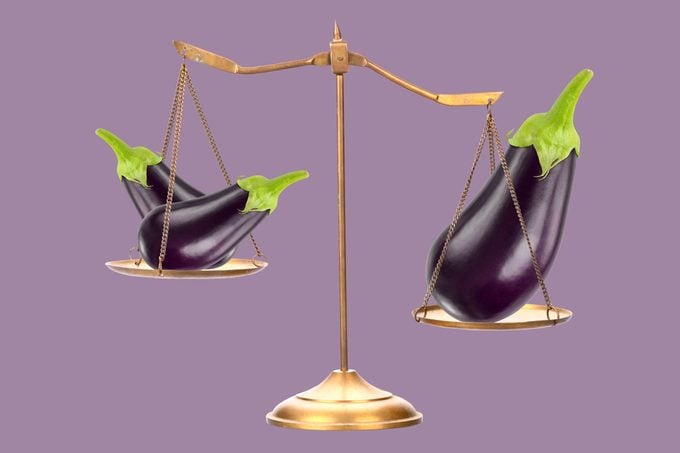
People into food facts trivia have long gone back and forth about whether a tomato is a fruit or a vegetable. Classifying eggplant is just as hotly debated. Unbeknownst to many, eggplants are technically classified as fruits—specifically, berries—because they grow from a single flower. (So, by that standard, cucumbers and melons are berries, too.) But the confusion is understandable, especially since chefs tend to roast, fry, grill, and mash eggplant, like they do other vegetables.
20. Rice and vinegar make all the difference between sushi and sashimi
Sushi and sashimi may sound interchangeable, but they aren’t. The pros at Benihana, a global chain of 70-plus authentic Japanese restaurants, explain this food fact: Sushi always includes short-grain rice mixed with rice wine vinegar, and it often—but not always—contains fish and is served in bite-size portions. Sashimi refers to thinly sliced ribbons of fish or meats, without rice. Popular types of sashimi include salmon, squid, and fatty tuna. Sushi newbies who aren’t sure about raw fish might want to start by trying options with vegetables, egg, or avocado.
21. In order for wasabi to be the real thing, it needs to be served very, very fresh
For sushi and sashimi fans, wasabi is just as much a part of the culinary experience as fish and rice. It comes from grating wasabi japonica, a plant native to Japan. Wasabi takes a minute or two after being grated to fully develop its pungent flavor, but then loses it altogether after about 20 minutes. For this reason, some authentic Japanese restaurants wait to grate wasabi until a dish is actually ordered. According to experts at the Japan Store, fake or imitation wasabi is made with a blend of Western horseradish, mustard, and green food coloring.
22. Peanut butter and jelly sandwiches hit their stride after World War II
Personal preference for jam versus jelly or smooth versus crunchy peanut butter aside, peanut butter and jelly sandwiches became the go-to sandwiches for kids in the United States in the mid-1940s. The humble PB&J was on military menus during the Second World War, thanks to its overall portability, ease of preparation, and high protein content, as well as the shelf-stableness of peanut butter. After the war ended, soldiers introduced the sandwich to their families, and iconic status was achieved. Next, find out why peanuts are not actually nuts!

23. According to science, the main ingredient in marinara actually belongs in the fruit bowl
There are legal definitions of fruits and vegetables, as well as scientific ones. A tomato fits the scientific definition of fruit because it forms from a flower and contains seeds. So botanically, tomatoes are fruits. However, the way we eat them and treat them in cooking means that they also fall into the legal category of vegetables.
24. Almost two-thirds of Americans prefer their pizza topped with pepperoni
When more than 6,000 Americans were asked to name their favorite pizza topping, pepperoni topped the list. In fact, nearly two-thirds of respondents to the 2021 survey (64 percent) shared this preference. Rounding out the top five popular toppings were sausage (56 percent), mushrooms (54 percent), extra cheese (52 percent), and onions (48 percent).
25. But almost two-thirds of Americans say a big “thanks but no thanks” to pizza topped with anchovies
A pie topped with anchovies has no place at a pizza party, according to 61 percent of respondents to a 2021 survey. Other toppings that get a hard pass? Eggplant (52 percent), artichokes (44 percent), broccoli (39 percent), and pineapple (35 percent)—even though 26 percent of respondents said they do like pineapple. To each their own pie!
26. When chocolate is the only thing that will hit the spot, milk chocolate reigns supreme
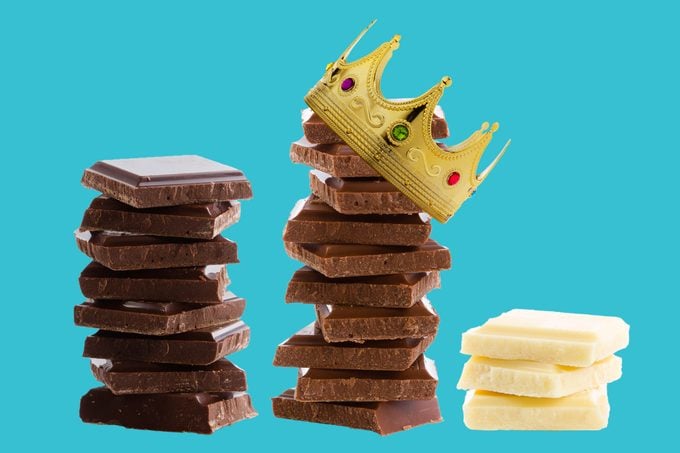
Milk chocolate is most people’s chocolate of choice, but dark chocolate starting to close the gap. For one thing, overall consumer awareness of the health benefits of dark chocolate is rising. According to CandyIndustry.com, it has seen 20 percent global growth since 2016. Dark chocolate contains anywhere from 50 to 90 percent cocoa solids, while milk chocolate contains fewer cocoa solids—from 10 to 50 percent, plus some form of milk. White chocolate, on the other hand, is made from cocoa butter, rather than cocoa solids.
27. Most grapes end up as wine
Grapes are popular all around the world, and they’re ripe for transformation—in fact, the vast majority grown are destined to become wine. While only 12 percent of grapes are intended to be eaten fresh, annual U.S. per capita consumption is about eight pounds per person. All grapes offer a great variety of vitamins and minerals, but red and Concord grapes are higher in polyphenols called flavonoids, which act as antioxidants. Resveratrol, a polyphenol especially lauded for its antioxidant efforts, is especially concentrated in red grapes.
28. Orange peppers are the best choice to protect your peepers
No matter the color, the nutrient profile of peppers generally doesn’t vary that much, since red, yellow, and orange bell peppers are just green peppers that stayed on the vine longer. For instance, all peppers offer well more than the recommended daily allowance for vitamin C. However, orange peppers have about 10 times the amount of two carotenoids that support eye health, so you might want to focus on that. 
29. Faced with an array of chip flavors, Americans still prefer plain
Despite racks stuffed with colorful bags of potato chips in an ever-growing list of flavors, plain potato chips still win the day with consumers. When Statista crunched numbers from the U.S. Census and a national consumer survey, preference for plain potato chips far eclipsed the desire for the next most popular flavor—barbecue.
30. Honey Nut Cheerios is the most popular cereal
Three words: Honey. Nut. Cheerios. Sold by behemoth food packager General Mills, Honey Nut Cheerios is the top-selling cereal in the United States. In fact, sales of Honey Nut Cheerios beat out sales of all store brands combined. In second place: Cinnamon Toast Crunch, also from General Mills. Tony the Tiger’s favorite, Frosted Flakes, rounds out the top three.
31. These fast-food favorites were created with input from a chef who once served British royalty
Here’s a hint: A little tub of dipping sauce—barbecue, honey mustard, or possibly sweet and sour?—often comes into play. Yes, McDonald’s chicken nuggets were originally created in the 1980s with input from chef René Arend, who cooked for Queen Elizabeth II and the king of Belgium, among others.
Now that you’ve read our surprising food facts, you’re ready to ace your next trivia game, food quiz, or master the art of small talk. Keep in mind: All these food facts are 100 percent true!
